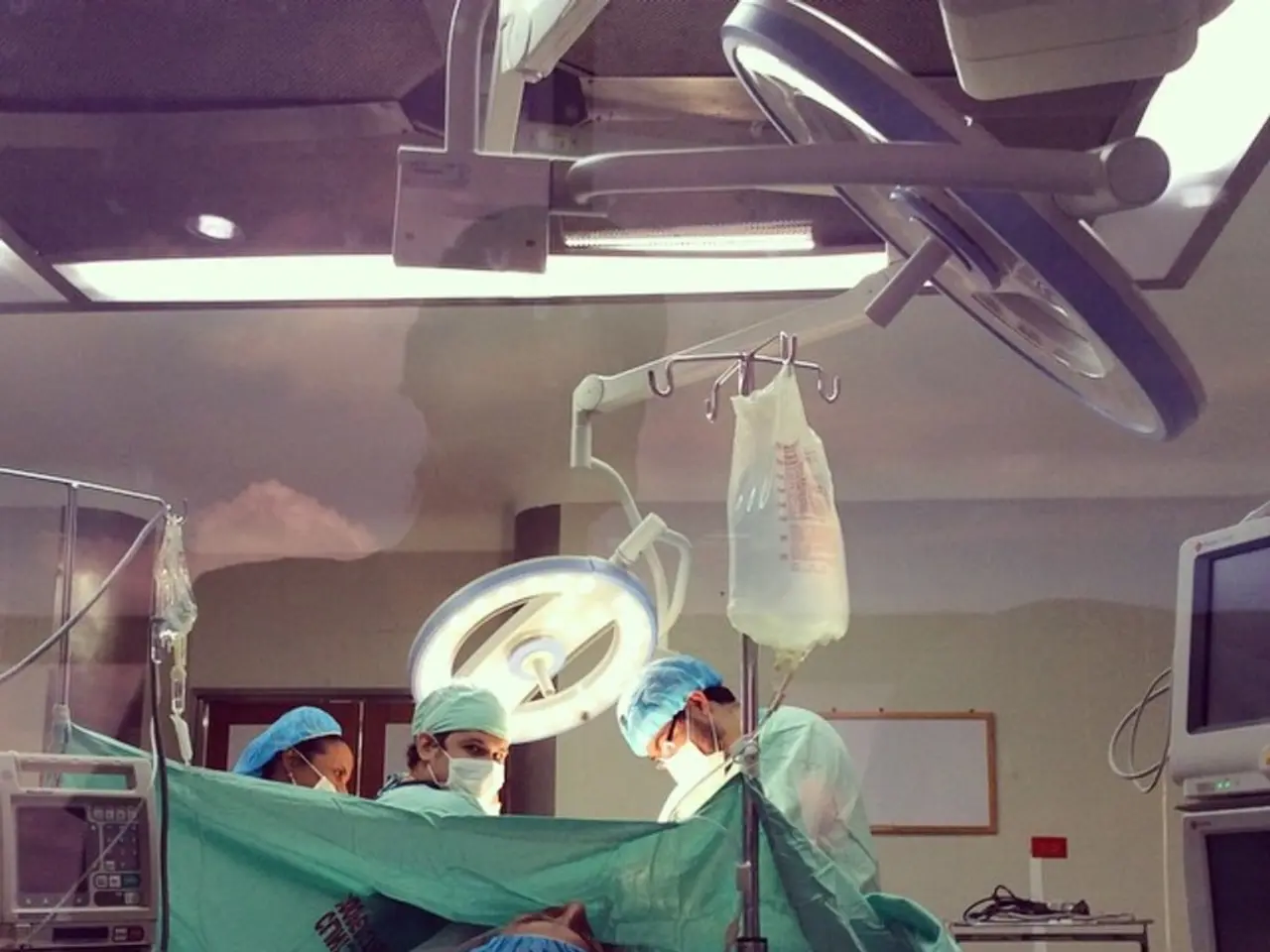Progress in Umbilical Hernia Correction: Methods, Developments, and Operative Perspectives
In the realm of abdominal wall hernias, umbilical hernias are a common type that affects both adults and children. These hernias occur when part of the intestine or fatty tissue pushes through the abdominal wall near the navel.
When it comes to surgical intervention, the preperitoneal umbilical mesh plasty has gained popularity due to its tension-free mesh placement, which minimizes postoperative pain. This technique, often referred to as the "PUMP" (Preperitoneal Umbilical Hernia Mesh Plasty) technique, is a refined approach to umbilical hernia repair.
For adults, elective repair using mesh reinforcement is widely considered the gold standard to reduce the risk of recurrence. Contributing factors in adults include obesity, pregnancy, ascites, and prior abdominal surgery. It's essential to assess patients for underlying risk factors like smoking or obesity before umbilical hernia repair.
Heavy lifting should be avoided during initial recovery following umbilical hernia repair. Faster recovery times are common in most patients undergoing the preperitoneal umbilical mesh plasty, with most returning to normal activities within two to four weeks.
For those seeking high-quality instructional videos on preperitoneal mesh repair for umbilical hernia in open surgery, a strong resource is the July 2025 video article from Springer Medizin. This resource provides detailed video segments covering anatomy, indications, and step-by-step procedural access routes.
Another valuable resource is the "Atlas of Abdominal Wall Reconstruction," 3rd Edition (Elsevier, 2025). This comprehensive guide contains many real-time video clips performed by expert surgeons, covering various abdominal wall repairs, including open and minimally invasive hernia repair techniques with mesh.
For robotic and minimally invasive variants of preperitoneal mesh repair, Springer Medizin also offers detailed endoscopic anatomical views and procedural outlines, though they focus more on robotic or laparoscopic techniques rather than open surgery specifically.
Surgical intervention is typically recommended for symptomatic cases, larger defects, or when complications are suspected. Appropriate mesh materials should be selected to minimize risks during umbilical hernia repair. Strict aseptic technique must be maintained to reduce the risk of infection during umbilical hernia repair.
Continuing education remains vital for surgeons to stay current with advances in mesh technology, surgical guidelines, and evidence-based techniques. Video-assisted learning has become a cornerstone of modern medical education, offering benefits such as spatial awareness, technique familiarity, and exposure to subtle details.
In conclusion, the preperitoneal umbilical mesh plasty offers a balance of simplicity, effectiveness, and low recurrence rates for umbilical hernia repair. By utilising authoritative, up-to-date resources like the ones mentioned above, surgeons can master this technique and provide optimal care for their patients.
In the realm of continuous learning and advancing medical practices, understanding health-and-wellness aspects like chronic diseases and medical-conditions such as umbilical hernias, requires understanding the latest techniques like the preperitoneal umbilical mesh plasty (PUMP). To minimize risks during the repair of such conditions, it's crucial to select appropriate mesh materials and maintain strict aseptic technique. Engaging in fitness-and-exercise routines, when recovered, can aid in overall health improvement, but must be balanced with cautious behavior, such as avoiding heavy lifting after umbilical hernia repair.




